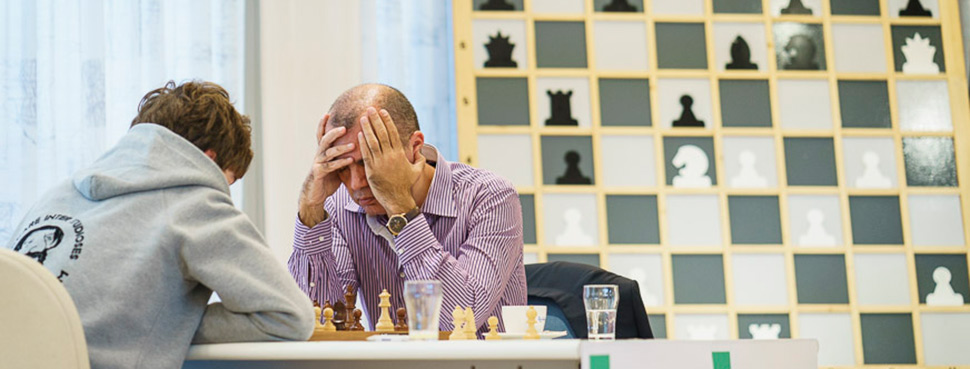So far the match between Van Foreest and Sokolov offers us everything we had hoped for: unexpected turns, excitement, drama. Jorden (not to be confused with his younger brother Lucas, who is now almost leading the Open) was hardly taken aback by yesterday’s defeat. He came to the board with a new weapon and dealt a crushing blow with a knight sacrifice when Sokolov went wrong in a difficult position.
The game Hou Yifan-Short was infinitely quieter: in a French game hardly anything happened, and after 42 moves the second draw was agreed.
Van Foreest was not at all surprised by Sokolov’s Philidor, though the young champion knew only one game by his opponent with that opening. He came what you might call well prepared.
Van Foreest - Sokolov
1.e4 e5 2.Nf3 d6 3.d4 Nf6 4.Nc3 Nbd7 5.Bc4 exd4
A slightly better version for Black, according to Van Foreest, is 5...Be7 6.a4 exd4, which he had played himself during this year’s Dutch Championship against Benjamin Bok.
6.Qxd4 Nb6 7.Bf4!?

A particularly venomous novelty. ‘I’d had the same idea on the board, with a different move order, in a tournament in France’, Van Foreest explained. ‘That game is not in the databases.’ White gives up the bishop pair for fast development, and as it will turn out the black bishops are not really coming into their own in this game.
7...Be7 8.0–0–0 Nxc4 9.Qxc4 0–0 10.Rhe1
10.e5 came into consideration even here; for example, 10...Be6 11.Qe2 Ne8 12.Nd4 is also unpleasant for Black. But this was all still preparation from the white player.
10...Be6 11.Qf1!?
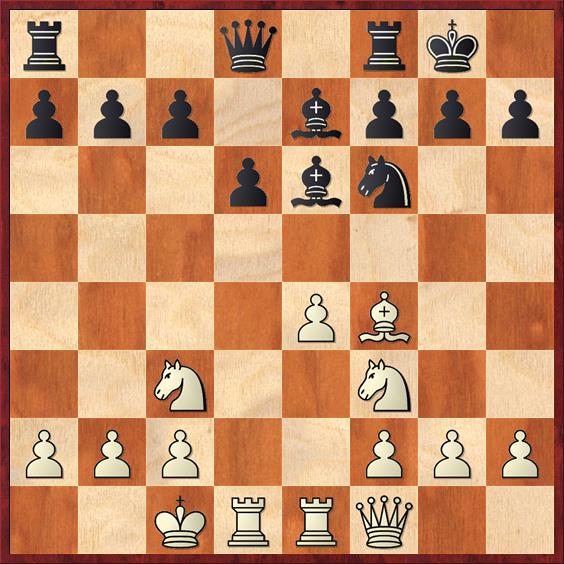
Still coked up at home. ‘With this retreat I keep the two central lines open’, said the youngster from Groningen. White’s attacking plan is logical, and will become clear in the next three moves.
11...Qc8 12.Nd4 Bd7!?
Sokolov wants to keep his bishop pair, but this takes time. Van Foreest had expected Black to act earlier on the queenside. ‘From here on I had the feeling that my attack was faster.’
13.f3 Rb8 14.g4 b5 15.Nf5! Bd8
If Black takes on f5, 16.exf5 also looks good – Van Foreest had planned 16.gxf5.
16.Qh3
This is not the way to beat a world-class grandmaster – unless you are a young stargazer! After the game Van Foreest wasn’t very satisfied with this move, because ‘now the distance between my queen and king is rather large’. All the same, White is already threatening with sacrifices like Nxg7 or sometimes Bh6, and sometimes g4-g5 is strong, too. The computer gives 16.e5 dxe5 17.Rxe5 with a positional advantage of an entirely different sort.
16...b4 17.Ne2 Qa6
In the commentary room, Gert Ligterink pointed at a pretty symmetry in this game: White’s queen goes via f1 to h3, and Black’s goes via c8 to a6. Sokolov is searching for a counterattack. Perhaps, 17...Ne8 would have been wiser, but that is a move he probably didn’t consider seriously for a moment.
18.Kb1 Be6 19.b3
‘I could also have played 19.Nc1 here’, Van Foreest said. ‘That would have been less weakening, but I didn’t see how Black could exploit this weakening. My plan was Bf4-c1-b2, and moreover I can now use the knight for the attack too.’
19...Rb5
Preventing 20.Bc1 as after 20...Ra5 the knight can no longer protect a2. White could have sacrificed a2, of course.
20.Be3
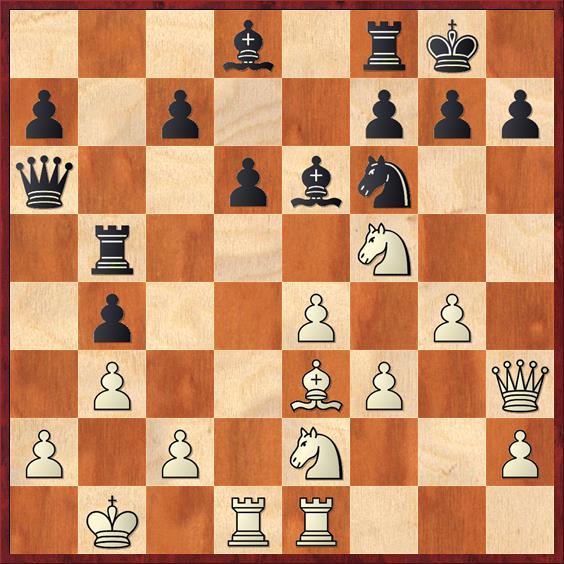
Now the bishop wants to go to d4.
20...d5?
‘A blunder, a blackout’, said Sokolov. ‘I hadn’t seen White’s reply. And I’d just prevented this type of shot with 19...Rb5.’
21.Nxg7! Kxg7 22.Bh6+!
Ligterink and his audience also looked at 22.Qh6+, which looks more logical if you look at White’s previous move, but is in fact less clear: 22...Kg8 23.Qg5+ (23.g5 Ne8 24.Nf4 doesn’t work well on account of 24...Bc8!, Van Foreest explained) 23...Kh8 24.Bd4 Bc8 25.exd5 and this is just a highly favourable position for White.
22...Kg8 23.Bxf8 Kxf8 24.Qh6+ Ke8
After 24...Kg8 many roads lead to Rome, but the simplest is 25.Qg5+ followed by 26.e5, winning back the piece. But now we see why White’s 10th move was so useful.
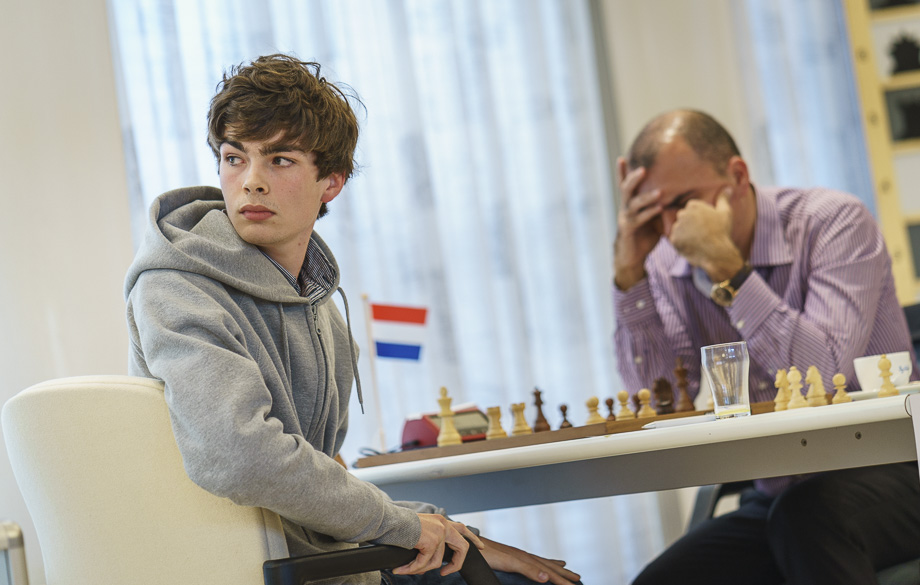
Photo: Lennart Ootes
25.Nd4 Ra5 26.Nxe6 fxe6 27.exd5
With the e-file open there is no way Black can save himself.
27...e5 28.Rxe5+ Kd7 29.Re6 1–0

Jorden van Foreest. Photo: Lennart Ootes

Ivan Sokolov before the game. Photo: Lennart Ootes
‘Caveman chess’ was what Nigel Short called what had happened on the contiguous board. As said, his own second clash with Hou Yifan took a quite different course.
Hou Yifan - Short
1.e4 e6 2.d4 d5 3.Nc3 Nf6 4.e5 Nfd7 5.f4 c5 6.Nf3 Nc6 7.Be3 a6 8.Qd2 b5 9.dxc5 Lxc5 10.Bd3 Qb6 11.Bf2
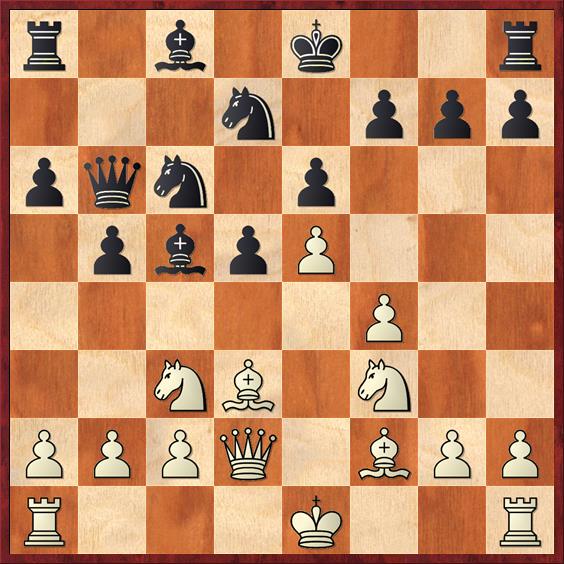
The most popular move here. The endgame that now arises is considered pleasant for White, but Short isn’t afraid of it.
11...Bxf2+ 12.Qxf2 Qxf2+ 13.Kxf2 Ke7 14.a3 Nb6 15.Rhe1 Bd7 16.Ne2 Rag8!

By threatening ...g7-g5, Short forces his opponent to close the king’s wing. ‘This is also known from the so-called Hoover Variation, where everything is exchanged’, said Short, who’d had this on the board with the white pieces, against Alexander Chernin in the Candidates tournament, Montpellier 1985.
17.h4 h5
Short-Chernin had continued 7...cxd4 (instead of 7...a6) 8.Nxd4 Bc5 9.Qd2 Bxd4 10.Bxd4 Nxd4 11.Qxd4 Qb6 12.Nb5 Qxd4 13.Nxd4 Ke7 14.g3 Nb8 15.Kd2 Bd7 16.Bd3 Nc6 17.Nf3 h6! 18.h4 h5, ‘and here I couldn’t really find anything with white.’ The game ended in a draw after 38 moves.
18.Ned4 Nxd4 19.Nxd4 Na4 20.b3 Nc5 21.Ke3 Rb8
Black places his pieces optimally to deal with possible actions with a3-a4. ‘I was constantly looking at these plans’, Hou Yifan said. ‘But he defended well, I found no way to get through. Actually it was the same story as yesterday, only the other way round.’
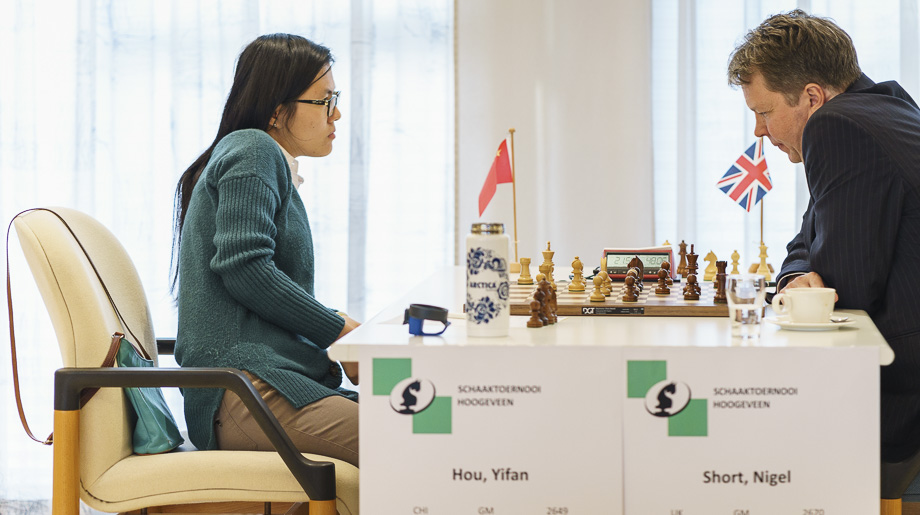
Photo: Lennart Ootes
Until move 42, when the draw was agreed, hardly anything happened. Both players were not dissatisfied with the course of their match so far. Hou Yifan thought both games had been logical. Although she seemed slightly disappointed by the fact that she hadn’t been able to show her aggressive style yet. And so Short’s strategy has been successful for the first two rounds. ‘First we had to warm up, and I had to survive the first two games’, the Englishman explained. ‘Anything can still happen, and I’m sure there will be more entertaining games.’

Hou Yifan. Photo: Lennart Ootes



